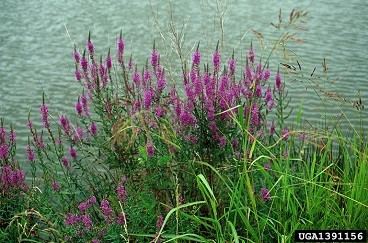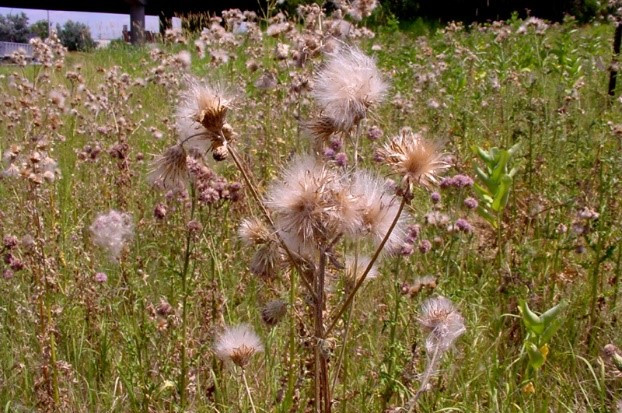Fall is a Great Time to Identify Invasive Species
Early fall can be a great time to identify invasive species around your property. Invasive species can potentially outcompete native plants. Controlling invasive species can help increase native plant diversity and create better habitat for local wildlife. It also help stop the spread of invasive seeds to your neighbor's property and other natural areas. The first step in managing invasive species on your property is by identifying them. Three species to look out for this time of the year are:
Canada Thistle is an aggressive perennial that produces many seeds. They are best identified by their wavy spiny/toothed margins that can be prickly if walked through. Most of their purple flowers have turned into a ball of white fluff by this time of year
Purple loosestrife is listed as a MDA prohibited noxious weed that grows along shoreland areas. Purple loosestrife can make it difficult to access open water and the dense root systems can even change the hydrology of wetlands. Leaves are lance-shaped with smooth edges and grow up to four inches long. They are usually arranged in pairs opposite each other on the stem, and rotated 90 degrees from the pair below. Individual flowers have five or six pink-purple petals surrounding small, yellow centers. Single flowers make up flower spikes, which can be up to one foot tall. This is a great time to look for the bright purple flowers along your shore.
Common tansy is also an invasive species that is currently flowering. The flowers are bright yellow and button like arranged in a flat-topped cluster. The leaves look fern like with reddish-brown stems. It is very common invasive species in the arrowhead of Minnesota. This quick spreading species can greatly impact landscape restoration efforts.
You can reach out to ACD if you want to confirm an invasive species on your property or want advice on how to manage the invasive population.


